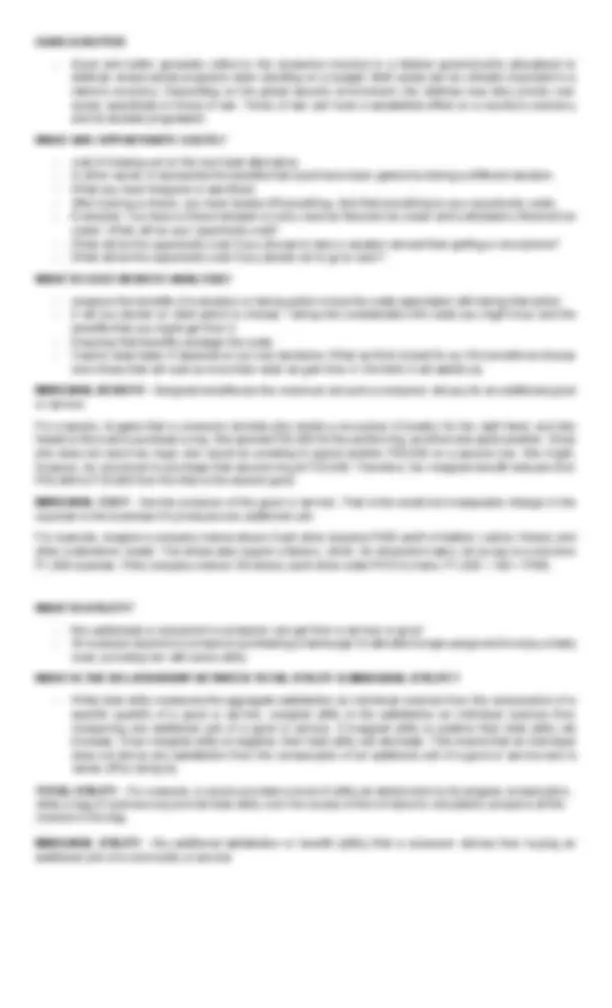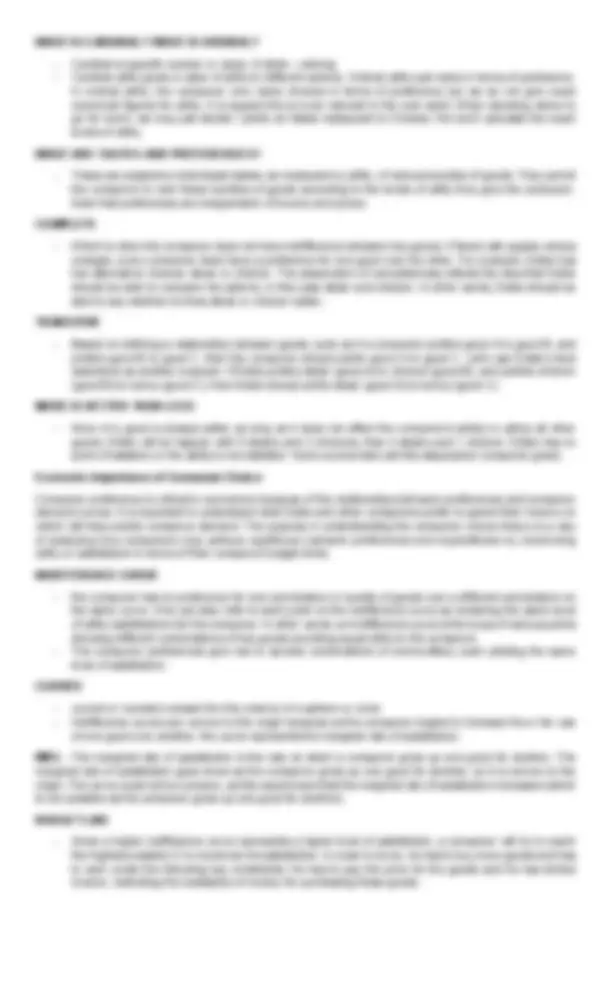
WHO ARE THE CONSUMERS?
- One that consumes, someone who acquires goods and services for direct use or ownership
- Not for resale or use in production and manufacturing
- The market; the one driving the economy with their behavior
- Purchasing products and services
- Organizations, people
- Not necessarily the buyer: Example: Parents buy toys for their children. The children are the consumers
of the toys. Not the parents.
- Knowing who the consumers are helps businesses in determining their strategies. They use market
studies to know what the behaviors of the consumers are so that they could take advantage of it to
maximize profits.
- All activities in the economy are driven by the behaviors of the consumers. Businesses produce supplies
or goods and services to cater the demands of the consumers. The consumers in return will buy those
products. In short, the activities of the businesses are focused on the consumers.
WHAT ARE CONSTRAINTS?
- Limitations; stoppage; constrictions; blockage to achieving or obtaining something
WHAT ARE THE CONSTRAINTS FOR CONSUMERS?
- Price and Income
- Most of us have a limited amount of money to spend on the things we need and want. With prices
increasing, our question is how are we going to afford the goods and services that we want to consume?
WHAT DO YOU THINK IS THE CONCERN OF THE BUSINESSES REGARDING THE CONSTRAINTS OF
THE CONSUMERS?
- On the part of the businesses, How are they going to maximize their profits if the consumers have
constraints or limitations such as lesser income to spend on goods and services?
- It will affect decision making on both consumers and producers/ sellers.
- Optimal solution: Consumers: to be satisfied with the things that we buy spending only on things that
what we can afford. Businesses: Maximize profits and lessen costs even if the consumers have
constraints. How are we to utilize the information on consumer’s behavior?
WHAT ARE UNLIMITED WANTS?
- We desire for so many things even those that we cannot afford.
- We never get enough because there is always something else that we need or want. The term
‘unlimited wants’ is the side of human nature that wants an infinite number of things. However, the
resources we have available to get these wants are limited.
- That’s where Constraints will enter into the picture – We cannot afford the unlimited wants because we
only have a limited income. If you are a student, you have an allowance. You cannot buy everything
that you want to buy because you are constrained by the limited allowance that you have. For working
individuals, there are so many wants (you want to travel, you want to buy new clothes, etc.) but you
are constrained by your obligations and you only have limited income. With that limited income, it is
not only for your wants but for some other obligations that you have.
- But still, the objective for consumers is to achieve the maximization of satisfaction.
- For businesses, there are limited resources around. Resources are scarce. How to satisfy the needs
and wants of consumers and maximize profits given that there are scarce resources?
WHAT IS SATISFACTION?
- Contentment; fulfilled needs and wants; happy; reached the peak of enjoyment of a certain product or
service
- Satisfying wants and needs is the ultimate goal of economic activity, the end result of addressing the
fundamental problem of scarcity. The attainment of satisfaction is also fundamental to life itself.
WHAT’S THE DIFFERENCE BETWEEN WANTS & NEEDS?
- As to meaning: Needs refers to an individual's basic requirement that must be fulfilled, in order to
survive. Something that you must have. Whereas Wants are described as the goods and services, which
an individual like to have, as a part of his caprices. Something that you wish to have.
- As to nature: Needs are limited whereas wants are unlimited.
- Needs represents necessity, basic needs. While wants represent desire.












